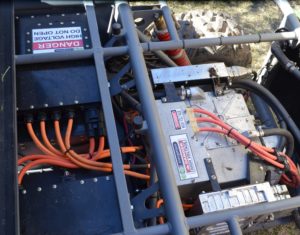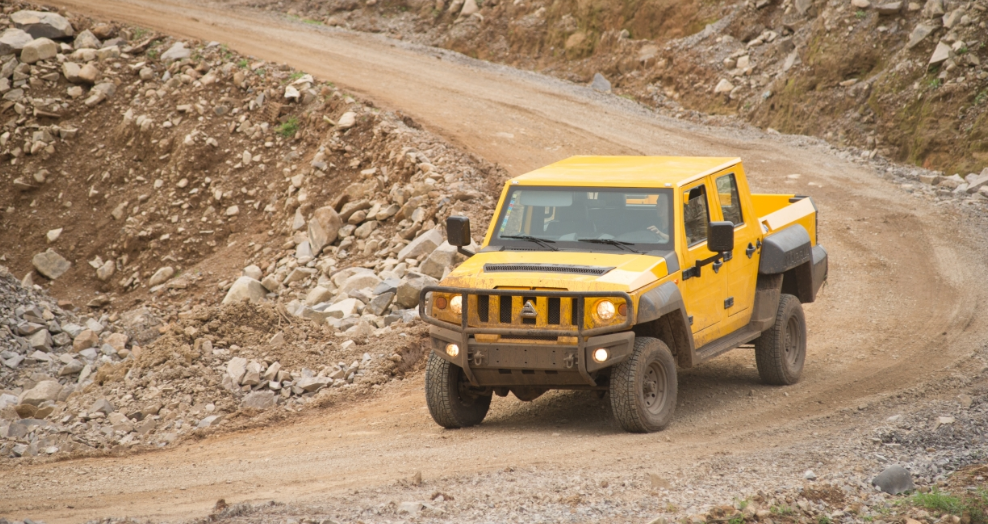Energetique Mining Vehicles, one of the eight METS companies to receive funding from the Australian government this week, has revealed to IM its plans to convert two underground mine utility vehicles from diesel to battery electric over the next few years.
EMV is part of Energetique, a group based in New South Wales, Australia, which has been developing battery electric vehicle systems in Australia for over a decade.
Project EVmine, which EMV is a partnering with Aeris Resources, Safescape, Minetech Australia and Cougar Mining Group, is due to receive some A$500,000 (US$369,185) of state funding as part of the latest round of the METS Ignited collaborative project funds. This comes on top of $700,000 of industry funding.
EVmine is currently focused on working with underground safety mining specialist Safescape on providing an EVmine system for a Bortana light utility vehicle.
EMV said the Bortana is purpose designed for harsh corrosive environments and extremely heavy-duty applications.
“The chassis, built by Agrale in Brazil, has military DNA, a reliable track record in mining and corrosive environments, and will carry more weight and last longer than the current light utility offerings in the Australian market,” the company told IM.
The Bortana EV is due to be trialled at Kirkland Lake Gold’s high-grade Fosterville underground mine in Victoria in early 2019.
The second vehicle under the EVmine project is a retrofit system for Aeris’ 19 tonne integrated tool carrier/loader.
“[This vehicle] is ripe for retrofit as they are maintenance demanding, often sit idle and expose workers to excess heat, noise and diesel particulates as they operate elevated in the basket outside of the air-conditioned cab,” EMV said.
This system will also include safety proximity detection and communication additions that have been developed by Mine Tech Australia over the last 12 months.
“The Tritton EV part of the project is focused on supporting organisational learning and the converting of existing fleets prior to the integration of next generation purpose-designed EV platforms. Aeris Resources want to start their transition to EVs now and they want the support from a local company to do this,” EMV said.
The EV will be trialled at the Tritton copper mine in New South Wales in early 2019.
EMV CEO Justin Bain said the conversion from diesel to battery electric on these vehicles has the immediate impact of improved health and safety for workers currently exposed to excess noise, heat and diesel particulate matter and will concurrently enhance the performance, efficiency, connectivity and sustainability of mining operations.
“This project will support the acceleration towards entirely electric underground mining in Australia and pave the way for our next-generation electric platforms for mining,” he said.
“This will be achieved through EV capability demonstrations in Australian mining, organisational learning by Australian mining companies and the establishment of the required local supporting capacity to integrate and manage this new technology.
“Our future electric mining platforms, in progress with our partners, will be more modular, connected, autonomous and cost effective.”
Separate to the METS Ignited supported Project EVmine, EMV is looking at other EV projects in Australia’s mining sector focused on the four-to-20-t range.
Energetique is looking to set itself apart from the rest of the competition in this burgeoning space by focusing specifically on the EV battery pack.

“The EVs will be powered by Energetique’s heavy-duty EVmine battery modules which are purpose designed to meet the highest levels of safety certification in Australian mining, whilst competing globally in energy density and being suitable for true high-power charging,” EMS said.
“The integration of an innovative thermal management system, a leading cell chemistry and format, progressive Battery Management System, ruggedised components and advanced safety features will see the EVmine battery module become a highly sought-after product within the mining industry.”
These platforms will also include remote monitoring and control software provided by Energetique’s subsidiary WYGGLE, which has roots in the Australia agricultural sector. The EVs will be run by Energetique’s Vehicle Control Unit software.











